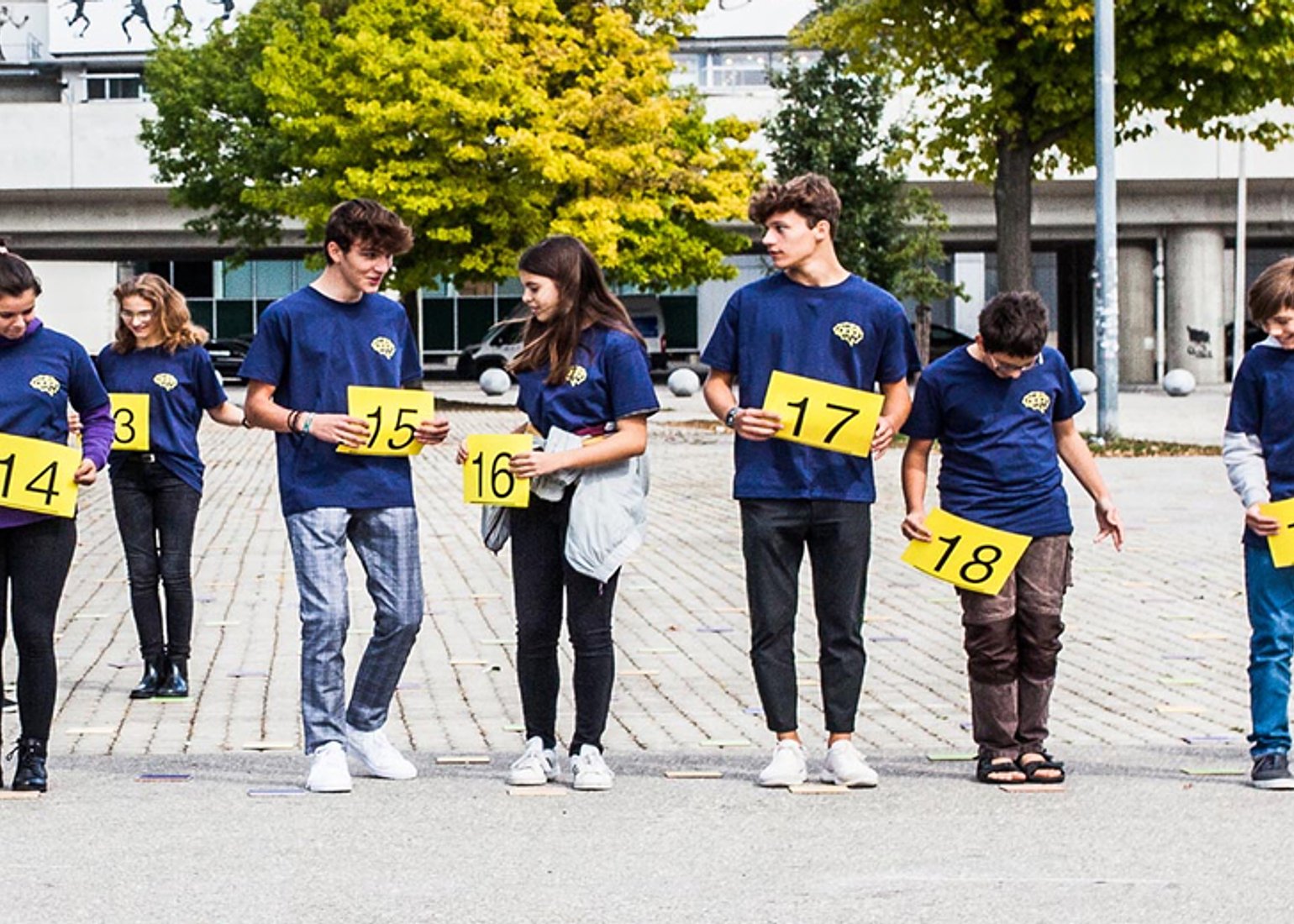The World’s Largest Human Sorting Network
How to promote computational thinking without computers, and why we need sorting networks in everyday life.

Many programs and apps use sorting algorithms to efficiently sort elements of a list into a certain order. Students from the Sir Karl Popper School in Vienna and the International School Klosterneuburg together with the Vienna Center for Logic and Algorithms (VCLA) of TU Wien Informatics simulated such a sorting network during their world record attempt in front of the Ernst Happel Stadium on 19 September 2019.
From Digital to Analog
Extremely complex computer systems, such as a modern smartphone, could not be constructed or programmed without introducing many levels of abstraction - that is the central content of computational thinking. Stefan Szeider tries to make computational thinking a tangible experience and to build a bridge between the digital and the analog: Digital processes such as sorting can also be carried out without computers! The pupils in the living sorting network showed how this works. To sort the numbers from 1 to 50, each of the 50 pupils carries a plate with a number. At the beginning, each person stands on an entrance node. In the next step, everyone goes to the nearest sorting node and compares the numbers. The person with the lower number steps to the right, the one with the higher number to the left. After several rounds, the pupils arrive at an exit node with their plates sorted from 1-50. With a total of 50 entrance nodes and 1,225 comparison nodes on an area of over 1,000 square meters, this was the largest human sorting network in the world to date.
{w18_gallery}
Ada Lovelace - Algorithms thought differently
The event initiated the project ADA - Algorithmen Denken Anders, which is carried out by the Vienna Center for Logic and Algorithms (VCLA). The ADA project runs until 2022 and is funded by the Vienna Business Agency and the BMVIT, and supported by the Future Learning Lab of the ZLI at the PH Wien, by the Austrian Computer Society, and by the EIS eEducation Austria Innovation Studios. The program is named after Ada Lovelace (1815-1852), who was the first programmer to write history without a computer, just by thinking computationally.
Curious about our other news? Subscribe to our news feed, calendar, or newsletter, or follow us on social media.
